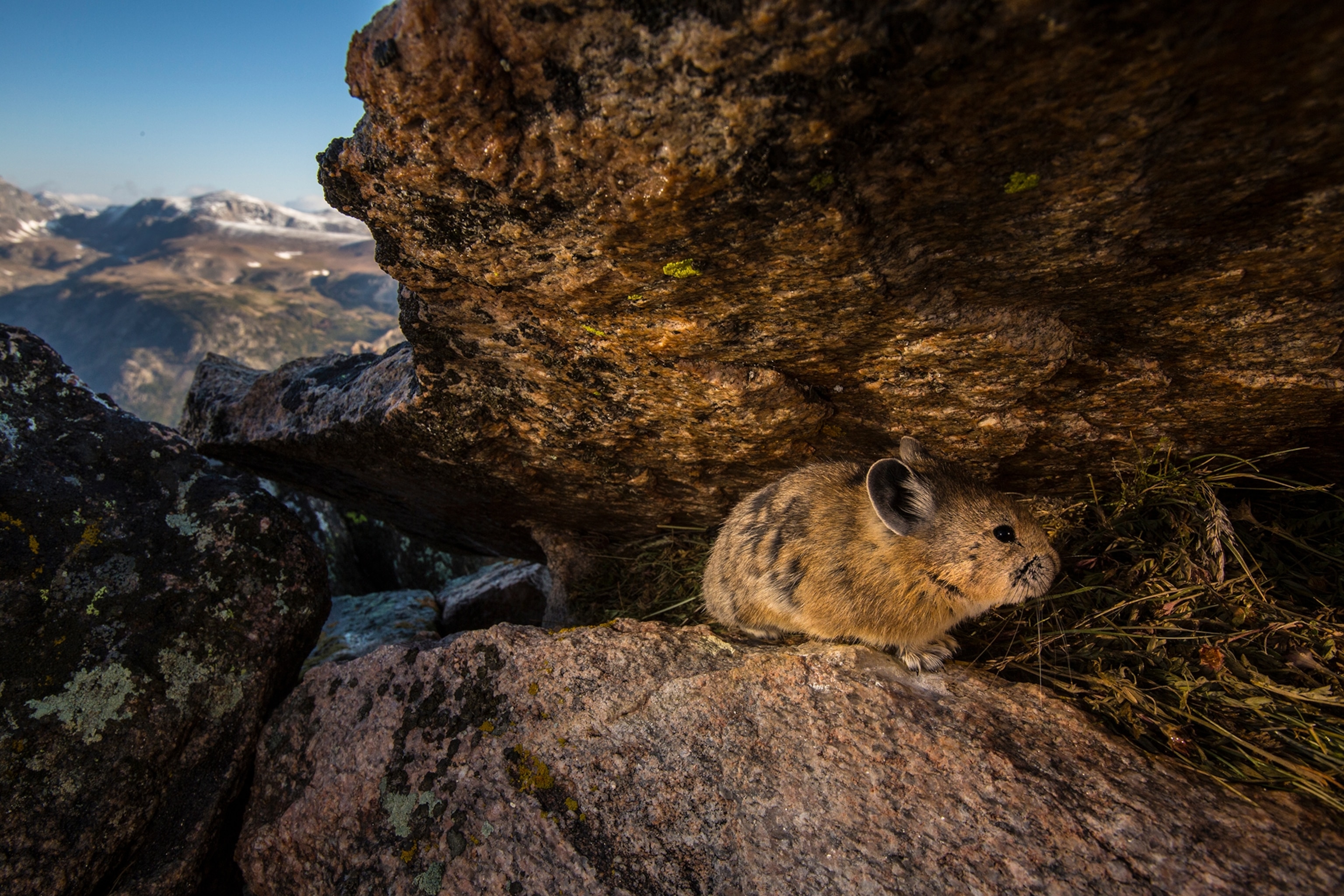
The Surprising Reason Tiny Lemurs 'Grow' Their Own Gardens
The primates, native to Madagascar, create groves of fruit-bearing plants that benefit them in several ways, a new study says.
Tiny primates in Madagascar create accidental "gardens" with their poop, a new study says.
Reddish grey mouse lemurs, which live in matriarchal clans of up to a dozen, tend to defecate close to home, near clumps of dry scrubland. In so doing, the chipmunk-size animals inadvertently sow seeds of their favorite fruit-bearing plants.
“They certainly don’t know they are doing it,” says study co-author Fabien Génin of Nelson Mandela University, but they benefit nonetheless: The family groups use these gardens as living spaces and nurseries, as well as food sources during the rainy season. (Read how Arctic foxes also cultivate their own "gardens.")
Matriarchs even defend the precious groves by chasing away unfamiliar males, according to the study, published recently in the Biological Journal of the Linnean Society.
Mismatched Plants
Génin first noticed the unusual combination of fruiting plants while studying reddish grey mouse lemurs—one of the island’s 18 mouse lemur species—in the early 2000s.
In areas frequented by lemurs, he noted mistletoe vines and drought-adapted trees with spiky leaves with few similarities always grew right next to each other. These plant clusters couldn’t be predicted based on sunlight, soil type, or nutrient availability; the lemurs were the common denominator. All of these plants produce nutritious fruits and berries in colors that appeal to mouse lemurs.
Intrigued, Génin and University of Fort Hare grad student Hajarimanitra Rambeloarivony spent hundreds of nights over a span of 12 years in the dry forests of the Berenty Reserve, following the lemurs and recording what they ate, where they slept, and which other lemurs they interacted with.

In the end, Génin and Rambeloarivony identified four clans with garden territories. (See pictures of the tiniest animals on Earth, including some mouse lemurs.)
Though the gardens only bear fruit during the rainy season, they're central to reddish grey mouse lemur society year-round. Males leave their home groves, but females inherit the garden areas where they were born.
“They spend all of their lives in these gardens,” Génin explains. Much of that time is spent sleeping in the branches of trees likely seeded by other lemurs.
Lemur Kindergarten
The gardens also serve as "daycare centers." Rather than taking babies on long, risky foraging treks, the reddish grey mouse lemurs leave their infants at home, under the watchful eyes of female relatives.
See Photos of Animals in High Places



















When juveniles are ready to make their first forays into the world, they often take place within the gardens' shelter.
This arrangement likely has benefits for the plants, too. When the scientists collected seeds from lemur feces and tested them against seeds cut directly out of fresh fruit, they found that some garden species were more likely to sprout after passing a mouse lemur’s digestive tract.
Scientists aren't sure exactly why partially digested seeds germinate more readily, but they suspect digestion gets rid of tough seed coatings or other chemicals that delay sprouting.
Ecosystem Engineers
Madagascar has only five native seed-dispersing birds, so its 101 lemur species take on a lot of the crucial burden of spreading seeds and keeping forests healthy. (See: “African Trees May Be Tied to Lemurs' Fate.")
Lemur gardens are also an example of how animals can shape their own habitats without even realizing it, says Kim Valenta, a evolutionary ecologist at Duke University who was not involved in the study.
“If you were at a campsite for a long time in the field, and you were throwing your fruit trash, your food waste, just outside of your camp, you would end up inadvertently planting a bunch of seeds of your preferred [fruit] species,” Valenta says.
As Rambeloarivony says, "the lemurs are actually like natural farmers."
Related Topics
You May Also Like
Go Further
Animals
- Soy, skim … spider. Are any of these technically milk?Soy, skim … spider. Are any of these technically milk?
- This pristine piece of the Amazon shows nature’s resilienceThis pristine piece of the Amazon shows nature’s resilience
- Octopuses have a lot of secrets. Can you guess 8 of them?
- Animals
- Feature
Octopuses have a lot of secrets. Can you guess 8 of them?
Environment
- This pristine piece of the Amazon shows nature’s resilienceThis pristine piece of the Amazon shows nature’s resilience
- Listen to 30 years of climate change transformed into haunting musicListen to 30 years of climate change transformed into haunting music
- This ancient society tried to stop El Niño—with child sacrificeThis ancient society tried to stop El Niño—with child sacrifice
- U.S. plans to clean its drinking water. What does that mean?U.S. plans to clean its drinking water. What does that mean?
History & Culture
- Gambling is everywhere now. When is that a problem?Gambling is everywhere now. When is that a problem?
- Beauty is pain—at least it was in 17th-century SpainBeauty is pain—at least it was in 17th-century Spain
- The real spies who inspired ‘The Ministry of Ungentlemanly Warfare’The real spies who inspired ‘The Ministry of Ungentlemanly Warfare’
- Heard of Zoroastrianism? The religion still has fervent followersHeard of Zoroastrianism? The religion still has fervent followers
- Strange clues in a Maya temple reveal a fiery political dramaStrange clues in a Maya temple reveal a fiery political drama
Science
- NASA has a plan to clean up space junk—but is going green enough?NASA has a plan to clean up space junk—but is going green enough?
- Soy, skim … spider. Are any of these technically milk?Soy, skim … spider. Are any of these technically milk?
- Can aspirin help protect against colorectal cancers?Can aspirin help protect against colorectal cancers?
- The unexpected health benefits of Ozempic and MounjaroThe unexpected health benefits of Ozempic and Mounjaro
- Do you have an inner monologue? Here’s what it reveals about you.Do you have an inner monologue? Here’s what it reveals about you.
Travel
- Follow in the footsteps of Robin Hood in Sherwood ForestFollow in the footsteps of Robin Hood in Sherwood Forest
- This chef is taking Indian cuisine in a bold new directionThis chef is taking Indian cuisine in a bold new direction
- On the path of Latin America's greatest wildlife migrationOn the path of Latin America's greatest wildlife migration
- Everything you need to know about Everglades National ParkEverything you need to know about Everglades National Park




